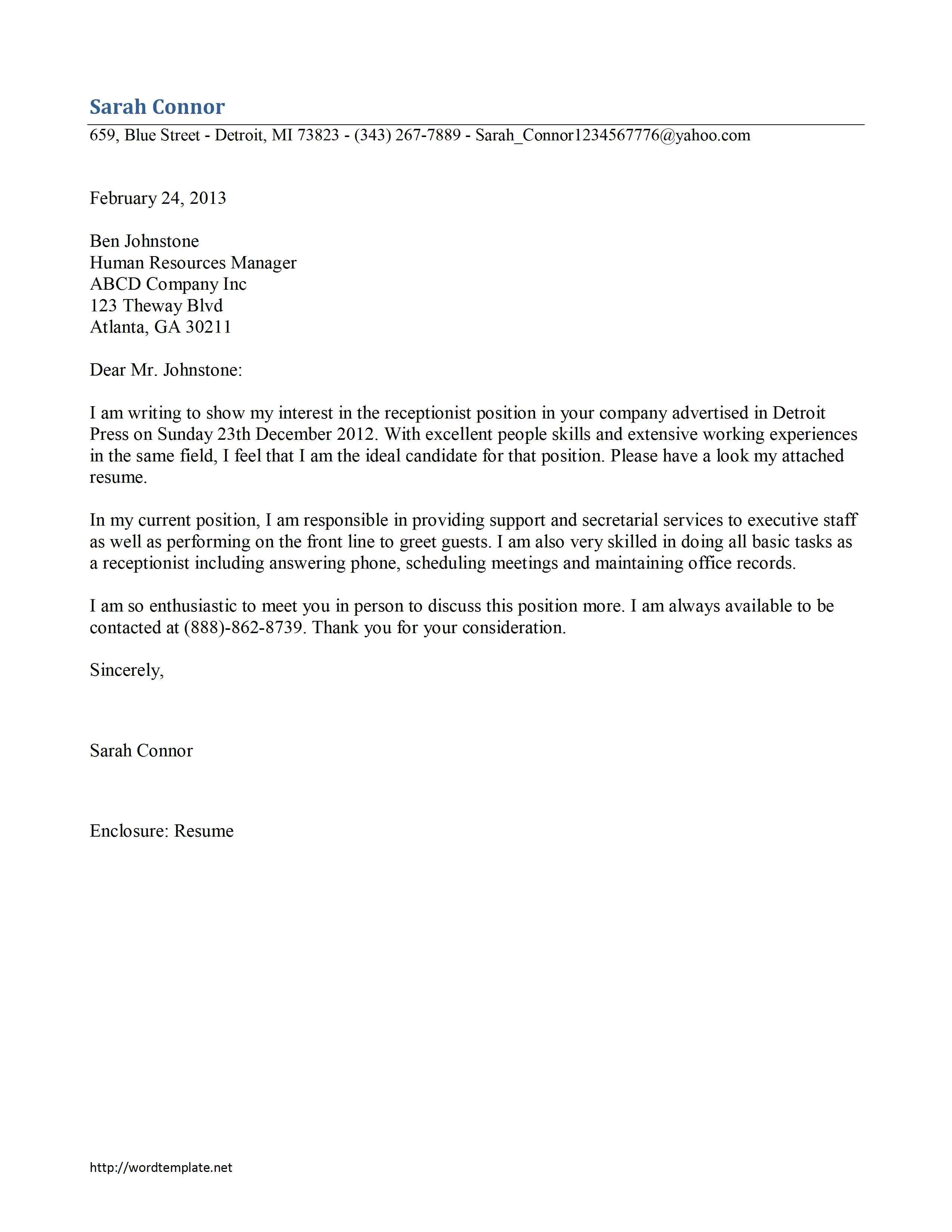Key Elements of a Receptionist Cover Letter
A well-crafted receptionist cover letter is your first impression, providing a crucial opportunity to showcase your qualifications and personality. This guide breaks down the essential components to help you create a compelling cover letter that grabs the hiring manager’s attention. From the header to the closing, each element plays a vital role in presenting you as the ideal candidate. The goal is to demonstrate not just your skills, but also your enthusiasm for the role and the company. Let’s dive into the key elements that will make your cover letter stand out from the competition. Consider this your go-to resource for building a cover letter that leads to an interview.
Header of Cover Letter
The header of your cover letter sets the stage for a professional presentation. It includes your contact information, the date, and the employer’s contact information. Accuracy and neatness are key, as this section conveys attention to detail. Ensure all information is current and correctly formatted to avoid any miscommunication. This part is critical for the recruiter to contact you.
Your Contact Information
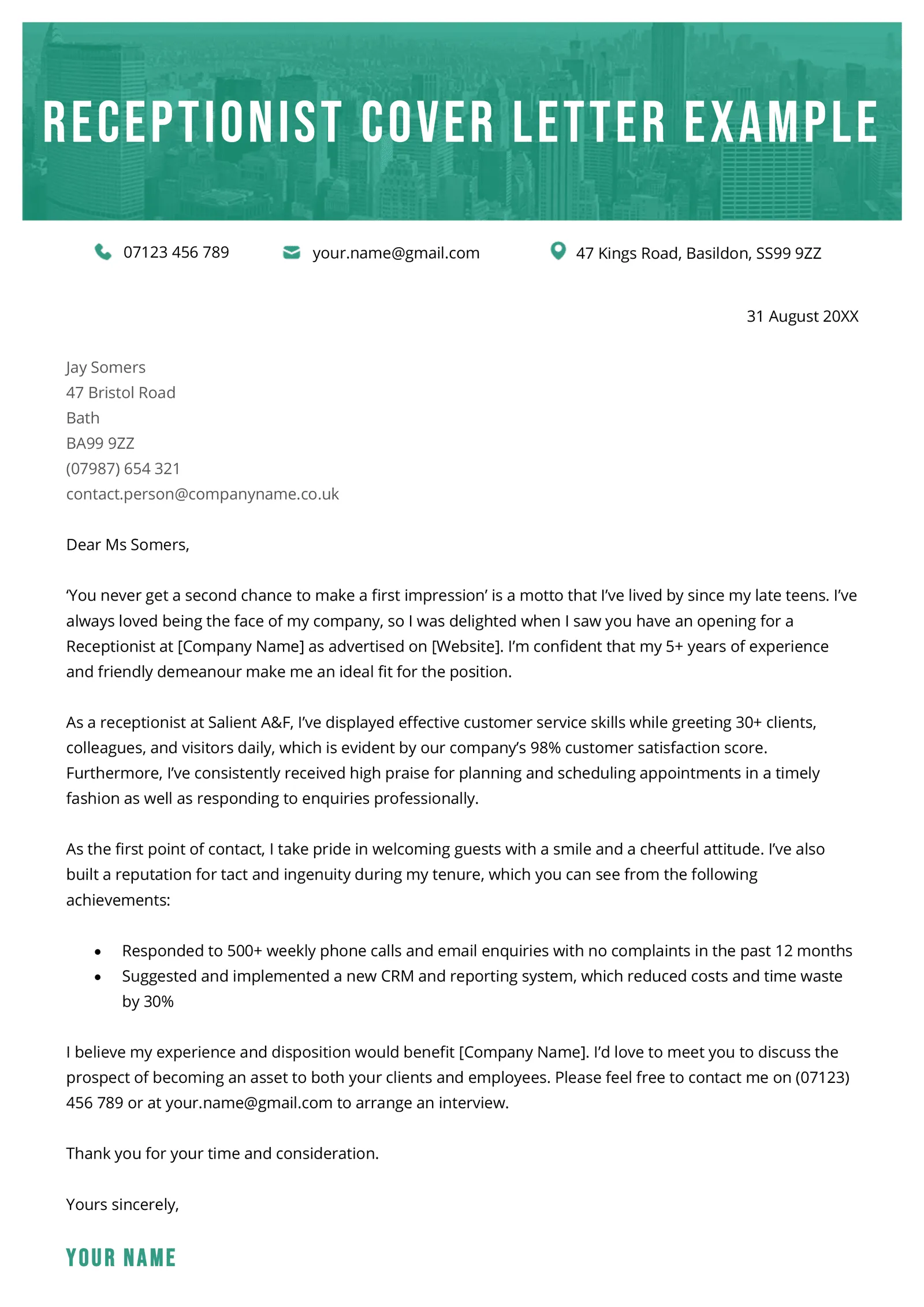
Start with your full name, address, phone number, and email address. Make sure your email address is professional. It is the first thing the recruiter will see. Use a clear and easy-to-read font, and ensure your information is aligned neatly. This section is your digital business card, so make sure it is presented effectively.
Date
Following your contact information, include the date you are sending the cover letter. This provides a time reference. Ensure the date is formatted consistently with the other elements in the header.
Employer’s Contact Information
If possible, address the cover letter to a specific person. Include the hiring manager’s name, their title, the company name, and the company’s address. Researching the hiring manager’s name shows initiative and attention to detail. If you cannot find a specific name, use a general greeting like ‘Dear Hiring Manager’.
Professional Greeting
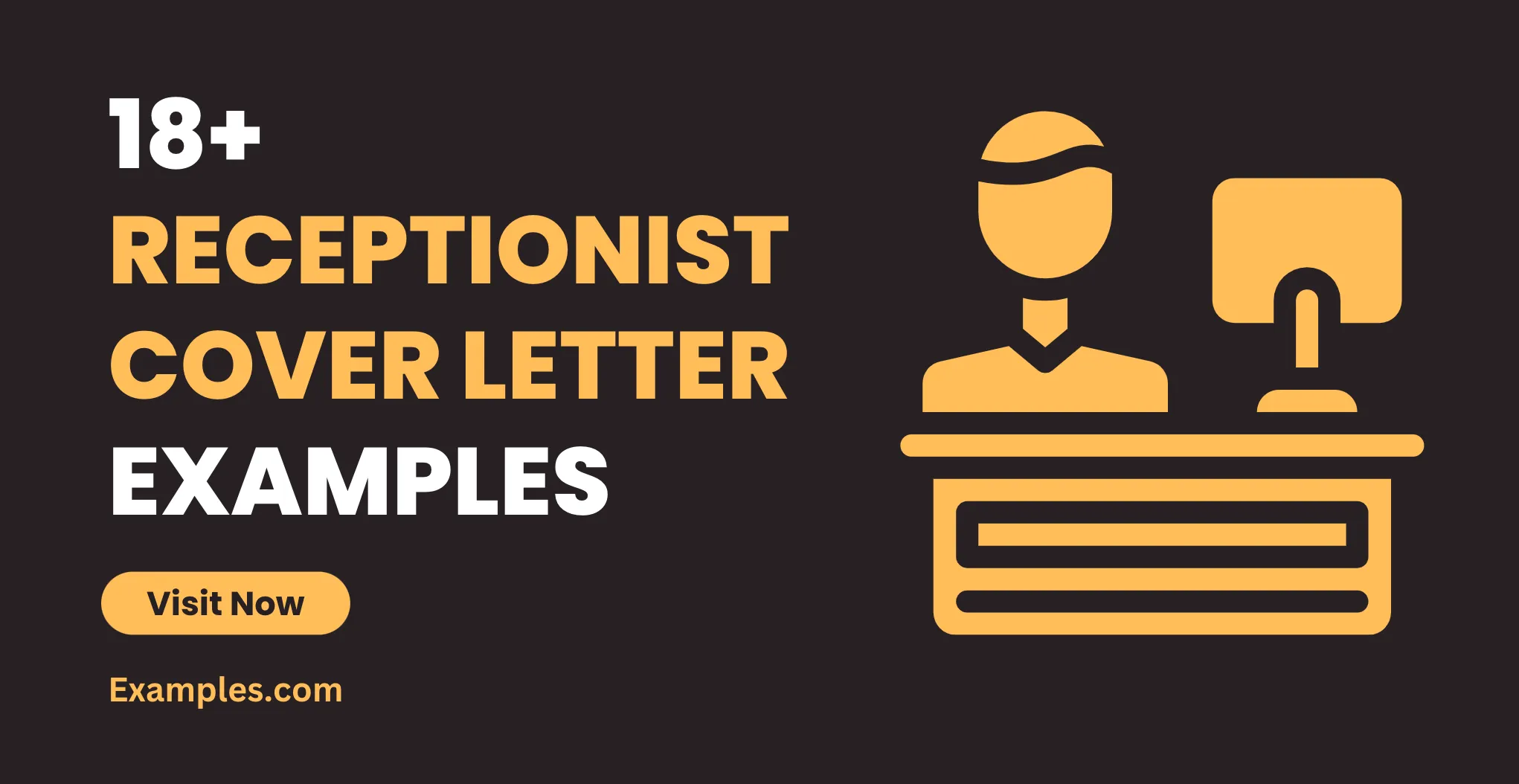
Start your cover letter with a professional greeting, such as ‘Dear Mr./Ms./Mx. [Last Name]’ or ‘Dear Hiring Manager’. Using a specific name personalizes the letter, which helps to build the connection with the reader. Avoid informal greetings as they can diminish the perceived professionalism.
Body Paragraphs
The body paragraphs are where you sell yourself. This is your opportunity to highlight your relevant skills, experience, and enthusiasm for the role. Each paragraph should have a clear purpose, and together, they should paint a picture of why you are the perfect fit. Be concise, focused, and tailored to the job description to make your cover letter stand out.
First Paragraph State Your Purpose
Begin by stating the position you are applying for and how you found the job opening. Briefly mention why you are interested in the role and the company. Make a strong opening statement that grabs the reader’s attention. Express your genuine interest in the receptionist position and the company.
Highlight Relevant Skills

Emphasize the skills that match the job description. Receptionist roles require excellent communication, organizational abilities, and customer service skills. Mention your proficiency in managing phone calls, scheduling appointments, and handling administrative tasks. Highlight skills with examples to illustrate your expertise. Tailor this section to the specific requirements listed in the job posting.
Emphasize Relevant Experience
Describe your relevant experience in detail. Mention previous receptionist roles, customer service positions, or any administrative experience. Quantify your accomplishments whenever possible, such as the number of calls handled or the efficiency gained through your organizational skills. Provide specific examples of how you have excelled in your past roles, especially those that showcase your ability to handle a variety of tasks simultaneously. Using numbers helps demonstrate your impact.
Showcase Enthusiasm
Express your enthusiasm for the role and the company. Research the company and mention specific reasons why you want to work there. Show that you understand the company’s mission and values, and explain how your goals align with theirs. This demonstrates your genuine interest and increases your chances of being remembered.
Closing the Cover Letter

The closing paragraph is your final opportunity to leave a positive impression. This is where you reiterate your interest, thank the reader for their time, and provide a clear call to action.
Formal Closing and Signature
Use a formal closing such as ‘Sincerely’, ‘Best regards’, or ‘Thank you’. Include your typed name below your signature. If sending a digital cover letter, you can type your name. If sending a physical letter, leave space for your handwritten signature above your typed name.
Proofreading
Thoroughly proofread your cover letter for any errors in grammar, spelling, or punctuation. Errors can undermine your professionalism. Read your letter aloud to catch any awkward phrasing. Consider asking a friend or family member to review your cover letter as a fresh pair of eyes can often spot mistakes that you might miss.
Common Mistakes to Avoid
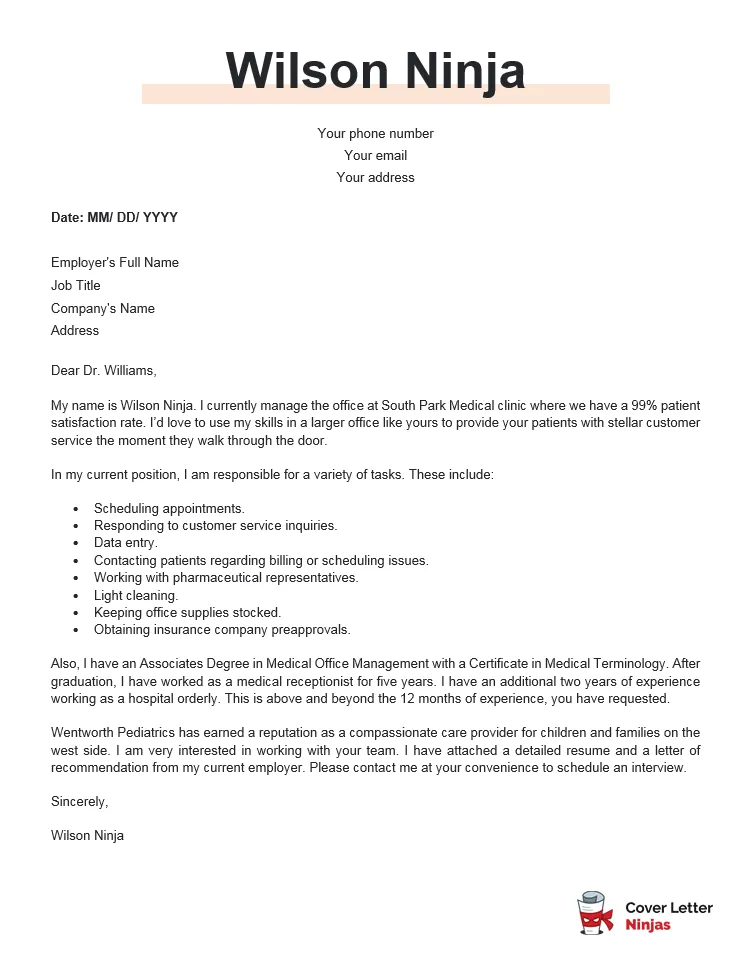
Avoid common pitfalls that can diminish your chances of getting an interview. Attention to detail and careful consideration of your language and formatting are crucial. Be mindful of these errors to ensure your cover letter effectively presents your qualifications.
Typos and Grammatical Errors
Typos and grammatical errors make a negative impression on the recruiter. They show a lack of attention to detail. Always proofread your cover letter and use spell-check, then ask someone else to review it. Double-check names, titles, and company information for accuracy. The recruiter will immediately dismiss your application.
Generic Language
Avoid using generic phrases that could apply to any job. Tailor your cover letter to the specific position and company. Show that you understand the company’s culture. Research the company to find specific details about the role. Make your letter unique to the role and company.
Focusing on Yourself Too Much
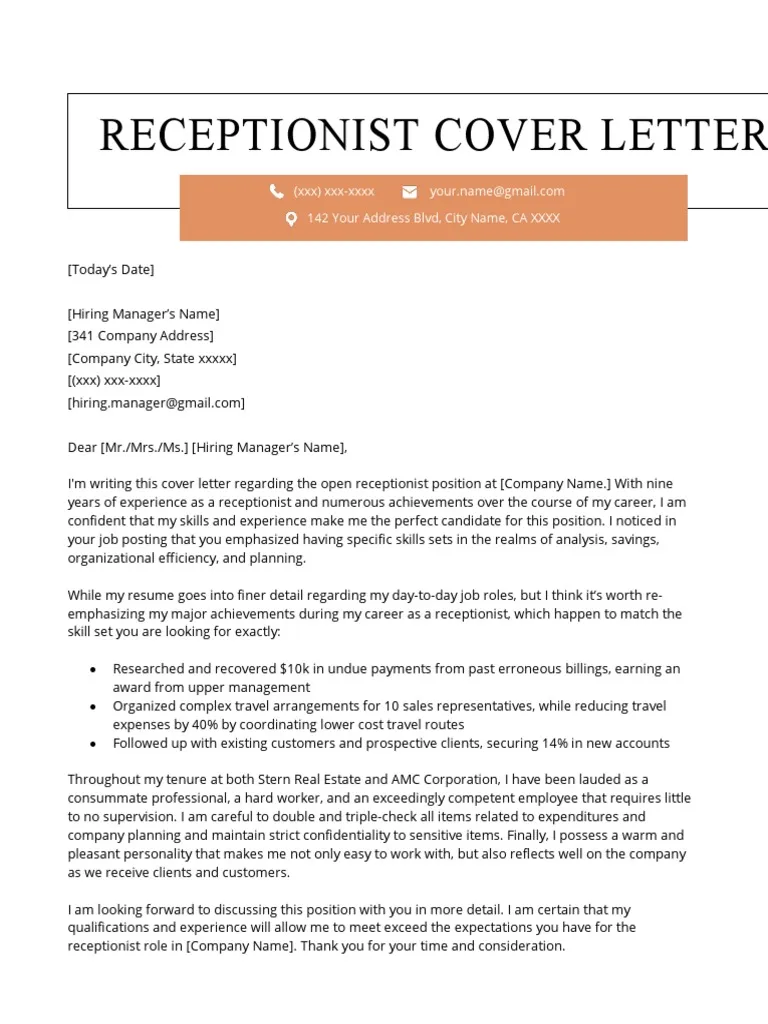
Balance your focus on your skills and experience with how you can benefit the company. Avoid excessive self-promotion. Instead, frame your skills in terms of how they align with the company’s needs and goals. Highlight your achievements in a way that shows your value to the employer.
Not Tailoring the Letter
Do not send a generic cover letter. Tailor each cover letter to the specific job and company. Personalize the cover letter to reflect your understanding of the company’s needs. Research the company, the role, and highlight relevant skills. This increases the chances of getting an interview and showing the recruiter that you are serious about the role.
Formatting the Cover Letter
Effective formatting enhances readability and professionalism. Choose a clear font, use appropriate spacing, and ensure the layout is easy on the eyes. Consistent formatting throughout the document is essential for a professional look. Make sure your cover letter is well-organized and easy to read. Use a clean format.
Font and Font Size
Select a readable font such as Times New Roman, Arial, or Calibri, and use a font size between 10 and 12 points. Avoid using overly decorative fonts that might make your cover letter difficult to read. Maintaining consistency in your font choices is key to professionalism.
Margins and Spacing
Use standard one-inch margins on all sides of your cover letter. Use single-spacing within paragraphs and double-spacing between paragraphs. Proper spacing ensures that your cover letter looks clean and well-organized, making it easier for the hiring manager to read and understand.
Best Receptionist Cover Letter Examples
Reviewing examples can give you a clearer understanding of what a successful receptionist cover letter looks like. You can find numerous examples online, including those that are tailored to specific industries or job descriptions. Analyzing these examples can provide you with inspiration and ensure you create a cover letter that stands out.
